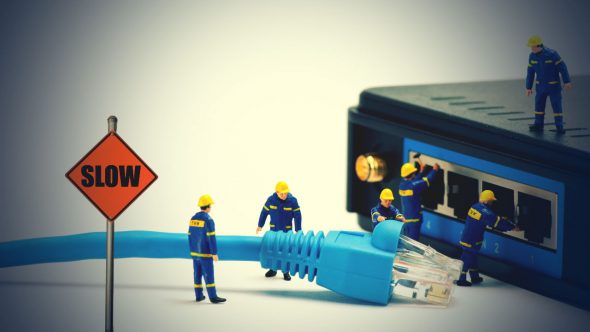With more websites featuring heavy imagery, videos, and other media that pulls a lot of weight, there is certainly more data being hosted on the average website as compared to a few years ago. Websites’ penchants for tracking visitor data and carefully monitoring their viewer activity is also adding to their load time, and there’s the added emphasis on security. The average website is actually slower now than it was last year. This is a consistent trend that’s been happening for the last couple of years.

Despite incredible technological breakthroughs and advancements, the internet is getting slower. Since fast websites equal online business success, naturally this becomes a problem. We can break the reason of this strange occurance into two causes:
Book a demo today to see GlobalDots is action.
Optimize cloud costs, control spend, and automate for deeper insights and efficiency.

1. Mobile browsing was a game changer – the Internet is being used in radically different ways than back in the day, which is causing it to become more slower.
2. Internet’s architecture is complicated; it’s outdated and expanding, hence, slow.
There are numerous reasons why companies fail at their application performance optimization, so we’ve pointed out 5 general things you should consider in order to keep the pace:
1. Internet Growth Compounds Performance Issues
As the Internet grows, it’s getting more complicated and slowness and poor application performance are the two main fallbacks. Since the web is growing more mobile, especially with the arrival of Internet of Things devices, it’s expected to become even slower. However, there are a number of things you can do.
Focus on online and mobile End-user experience. Define strategies to maximise user experience and upgrade your technology to engage and retain them. Monitor and optimize your user engagement and focus on mobile channels. user’s location, browser, device, Internet connectivity and in-page interaction to sequence application are invaluable info.
2. Improve Your Digital Experience Delivery
When talking about delivering content to end-users, there are both front-end and back-end elements to consider. Let’s talk front-end and back-end delivery:
- Front-End: End-users across the world access the web in different ways, which means you need to take device type, operating system, browser, network, and physical location into account.
- Back-End: Content delivery depends on a spectre of applications and software working together. When several servers must be called upon to deliver content this greatly increases the likelihood of slowdowns.
3. Prioritize Your IT
Your IT team needs to keep focused on implementing technology changes that will better your online business. Security has to be the No. 1 thing on the list, as DDoS attacks prove to be somewhat fatal for web businesses. End-user optimization is not front-of-mind. Consider that IT will have little bandwidth to dedicate to tweaking and tuning experience delivery.
4. Make Sure Your Hardware can Keep Pace
The (sudden) arrival of mobile browsing caused a certain technology lag; when mobile user numbers started popping out, businesses rushed to create separate mobile applications, which was generally a bad idea because of two simple reasons:
1. It’s horrible for SEO
2. Maintaining two applications means twice the effort.
Each time a new web breakthrough occurs, the current technology triggers a solution which becomes massively adopted, but starts dropping the second inadequacies start to surface. Eventually, productivity attributed to the technology will plateau and new technology iterations trigger to restart a new cycle. Responsive Web Design (RWD) is the current trigger technology and it’s basically a simplification of desktop mobile content to automatically resize and render itself well on mobile devices. Utilize responsive design to curate “mobile moments,” and achieve user friendly performance.
5. Consider that User Psychology has Radically Changed
Users have grown less patient and their attention span has shrunk a lot during the last couple of years. 5 years ago, typical users would’ve had no problem with waiting 15 seconds for the content to load, but that’s no longer the case. Users demand content that’s fully optimized for desktop, tablet and mobile. User expectations are also higher than ever before, which adds up to a complete intolerance for sub-standard digital experiences. Unless your content can load in less than 3 seconds, you’re out.
Using effective performance monitoring, you can make sure you’re webpages are loading as quickly as your customers expect them to. Remember, every second counts when it comes to the load speed of a web page, so make sure you keep an eye on your website’s performance using some amazing performance testing tools, before it costs you serious money.

At the end of the day, the performance perception is all that matters, and how your website interacts with the end-user. it’s a never ending labour but it keeps successful web businesses on the top of the food chain.






